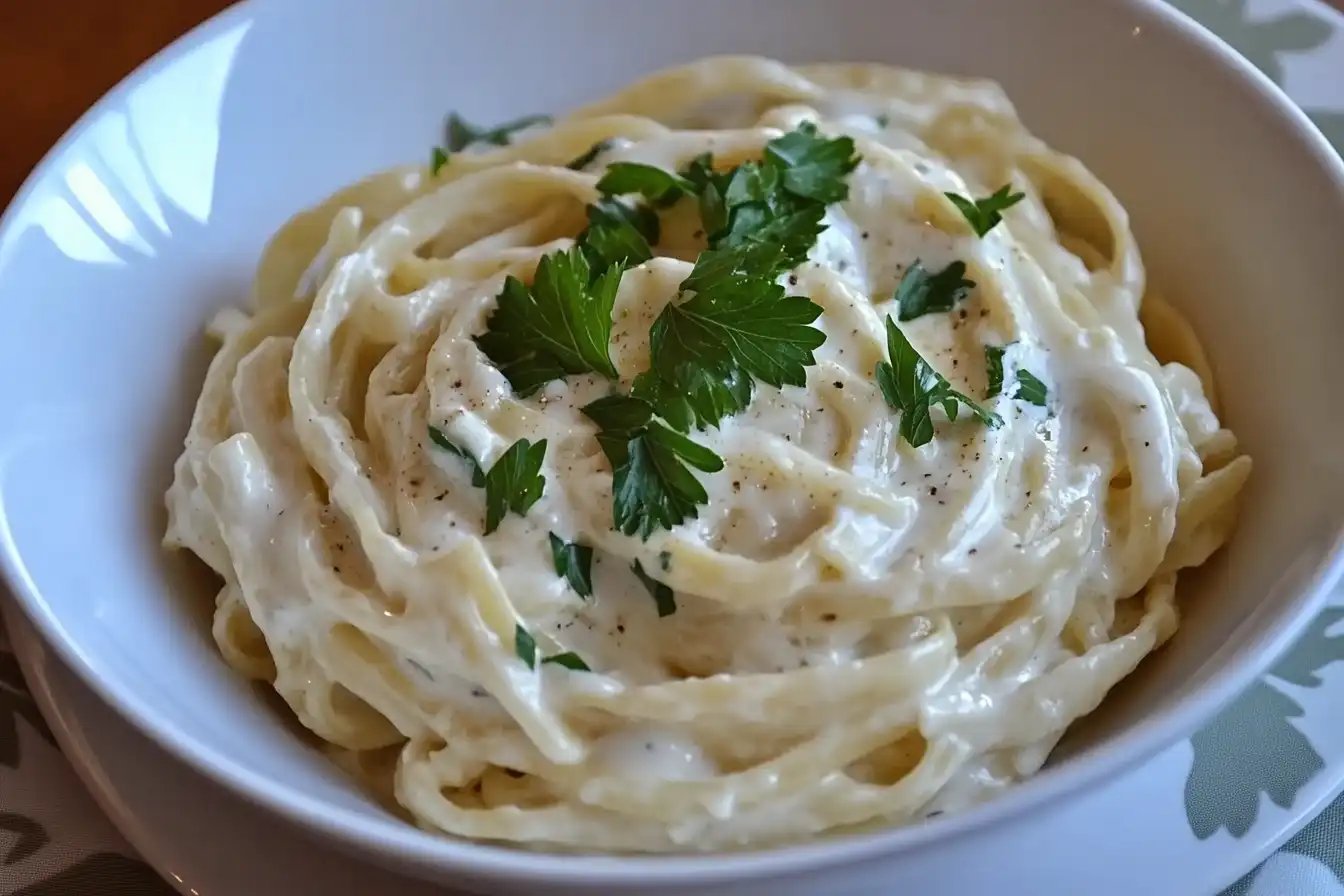What kind of pasta goes best with Alfredo sauce? This guide explores the ideal pasta for Alfredo, offering the best options and answering your questions.
Choosing the Right Pasta for Alfredo Sauce: An Overview
Alfredo sauce, known for its creamy, rich texture, requires pasta shapes that can properly hold and complement its lusciousness. Therefore, selecting the right pasta is essential for an outstanding meal. This article will explore several pasta options that work well with Alfredo sauce. We will also discuss why certain types are more suitable than others. Furthermore, we’ll delve into the nuances of each pasta, giving you a complete understanding.
Fettuccine: The Classic Choice for Alfredo
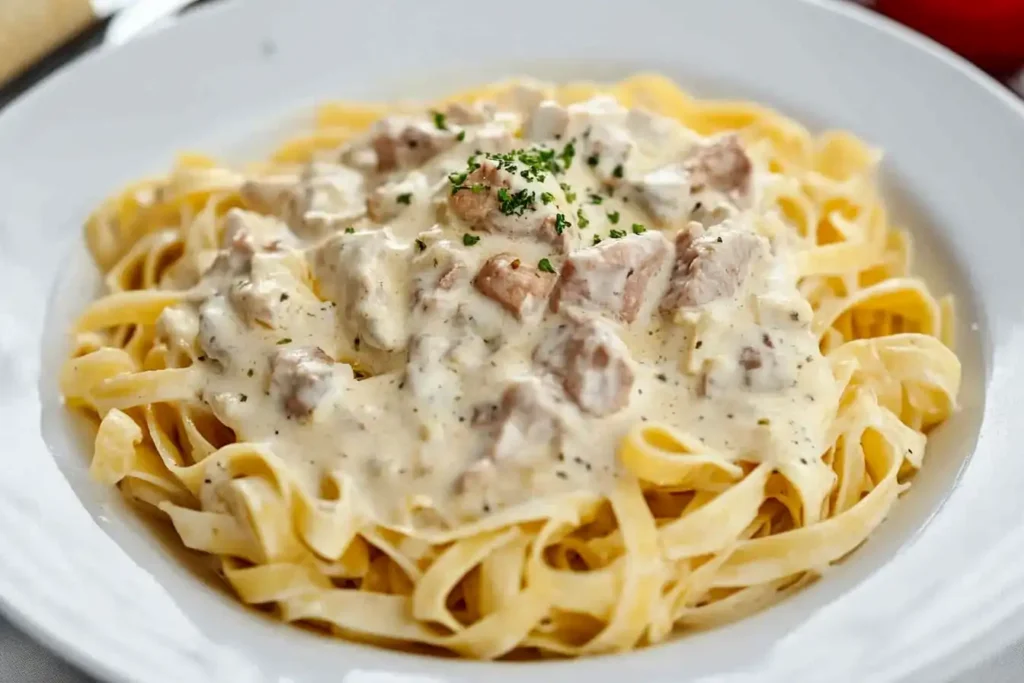
Fettuccine is perhaps the most iconic pasta when it comes to Alfredo. Fettuccine’s long, flat, ribbon-like shape provides a large surface area. Consequently, this allows the creamy sauce to cling perfectly. The sturdy nature of fettuccine also holds up well to the weight of the sauce. Fettuccine is, without a doubt, a great option, and because of this, it’s the pasta most often paired with Alfredo sauce. Indeed, this pairing is a timeless favorite.
Why Fettuccine is a Great Choice for Alfredo
- Surface Area: Its broad, flat shape provides a large area for sauce to adhere.
- Texture: The sturdy texture of fettuccine creates a great mouthfeel with the creamy sauce.
- Classic Pairing: Its a well-known and traditional pairing for this sauce. Therefore, it’s a safe and satisfying option.
Alternative Pasta Choices for Alfredo
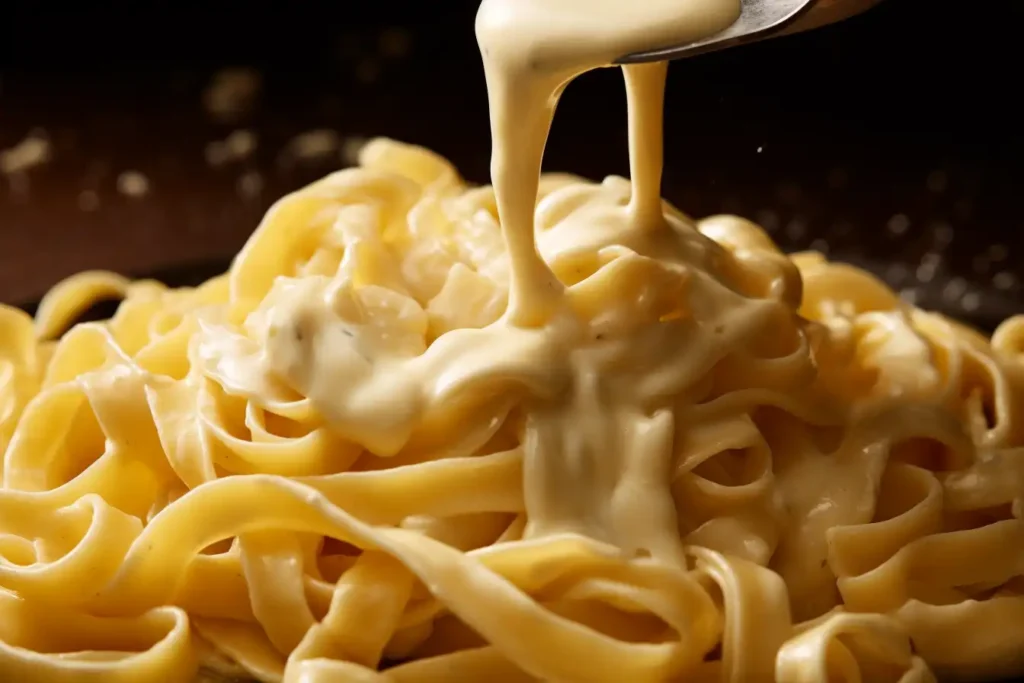
While fettuccine is a common option, other pasta shapes also pair very well with Alfredo sauce. Therefore, it is good to explore some of these alternatives. These include pasta types with a similar texture or ability to hold sauce. Here are some excellent alternative options that will enhance your meal. Specifically, these choices offer different textures and sauce-holding capacities.
Pappardelle: Wide Ribbons for a Hearty Meal
Pappardelle, wider than fettuccine, is another good choice. Its broad, ribbon-like shape ensures plenty of sauce can be captured. Furthermore, pappardelle’s thickness makes it quite hearty. This pasta is a great option for those who want a more substantial dish. Also, Pappardelle provides a luxurious texture which, therefore, works incredibly well with the creamy Alfredo sauce. Comparatively, pappardelle adds a more rustic touch to the meal.
Tagliatelle: A Close Cousin to Fettuccine
Tagliatelle, similar in shape to fettuccine, is a very effective alternative. This pasta is slightly narrower and, therefore, cooks slightly faster. Tagliatelle’s porous texture makes it ideal for Alfredo sauce. Additionally, the slight curve of tagliatelle helps trap more sauce. Tagliatelle is a superb option if you like the characteristics of fettuccine. Moreover, it’s a popular choice in many regions.
Linguine: A Narrower Option for Alfredo
Linguine, though narrower than fettuccine, is another good alternative. The pasta’s shape helps to hold the sauce effectively. Moreover, linguine’s slightly flattened shape also holds onto the creamy sauce quite well. This pasta can be a lighter choice compared to fettuccine, pappardelle, or tagliatelle. Consequently, Linguine is a good option for lighter meals. However, it still provides a great surface for the sauce.
Tube Pasta for Alfredo: Considering the Options
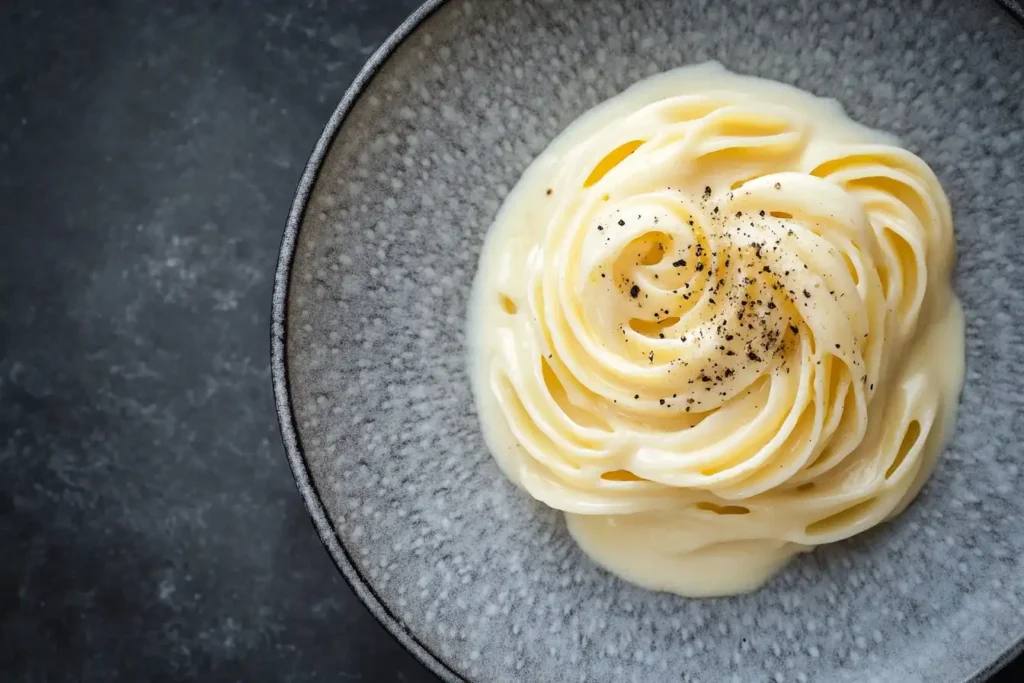
While long pasta is a great pairing for Alfredo sauce, you may wonder about tube pasta. Some tube-shaped pasta types can also work with this sauce, however it’s not as ideal as ribbon style pasta. Penne, for instance, is a popular option, but does it pair as well as fettuccine? Indeed, this is a common point of discussion.
Penne: A Good Option, but Not Ideal
Penne’s tubular shape and ridges allow for some sauce to cling to the pasta. However, the sauce can sometimes pool at the bottom of the dish with penne. This is because penne does not distribute the sauce as evenly. Therefore, while penne can work in a pinch, there are better options for Alfredo sauce. Specifically, penne might be a better option with more chunky sauces.
Other Tube Pasta Varieties
Other tube pasta options, such as rigatoni or ziti, might be considered. These pasta options have similar limitations as penne. Therefore, it’s best to stick with flatter pasta varieties for the best experience. Rigatoni, for example, has large ridges, which is good for chunky sauces. However, rigatoni may not be ideal with a smooth Alfredo sauce. Likewise, ziti also has a tendency to have the sauce pool at the bottom of the dish.
Pasta Shapes to Avoid with Alfredo
Certain pasta shapes are not well-suited for Alfredo sauce. These include delicate shapes that might break. They also include shapes that don’t hold the sauce well. Therefore, its best to avoid these pasta varieties. Accordingly, avoiding these options will help you achieve the best results with your Alfredo sauce.
Delicate and Smaller Shapes
Pasta shapes like orzo or ditalini are not recommended. These smaller shapes don’t provide enough surface area for the sauce. Consequently, the Alfredo can feel out of place. Also, thin pasta like angel hair can easily break under the creamy sauce. So, accordingly, it’s best to avoid these delicate options. In addition, these shapes tend to clump together when combined with a creamy sauce.
Pasta That Doesn’t Hold Sauce
Pasta shapes that don’t hold sauces well, like acini de pepe, should also be avoided. These pasta shapes lack the surface area to capture the sauce properly. Therefore, they won’t give you the full experience of a creamy Alfredo. Basically, these shapes are more appropriate for soups or broths.
Is Penne or Fettuccine Better for Alfredo?
Many people ask, is penne or fettuccine better for Alfredo? Fettuccine is generally the preferred option. Its flat, wide shape holds the sauce much better. Penne, while acceptable, is not the first choice. Penne’s tubes don’t create the same great texture with Alfredo sauce. Therefore, fettuccine is almost always the better option for this type of creamy sauce. Undoubtedly, fettuccine’s structure makes it a superior match.
Advantages of Fettuccine over Penne
- Sauce Cling: Fettuccine clings to the sauce more efficiently.
- Surface Area: Fettuccine has a greater surface area.
- Texture: The texture of fettuccine is a better complement to the creaminess of Alfredo. Ultimately, these factors make it the better choice.
Other Considerations When Choosing Pasta
When choosing pasta for your Alfredo sauce, several other factors should be considered. This includes thickness and how it’s prepared. These choices can all effect the final dish. Specifically, these factors can impact the texture and the overall flavor of the dish.
Fresh Pasta vs. Dried Pasta
Both fresh and dried pasta work well with Alfredo. Fresh pasta has a more delicate texture, while dried pasta is more robust. Therefore, your choice depends on your preference. Fresh pasta typically cooks faster and can absorb more sauce. Dried pasta, on the other hand, holds its shape better. Ultimately, fresh pasta can offer a more luxurious experience with the Alfredo sauce. Comparatively, dried pasta is easier to store and use.
Cooking Time and Texture
The cooking time of the pasta is essential. Overcooked pasta can become mushy, and therefore, it will not hold the sauce well. Ensure that you cook the pasta al dente. That is, it should be firm to the bite. This ensures that the pasta maintains a good texture. This is especially true when combined with creamy sauces. Moreover, al dente pasta provides a pleasant chewiness.
The Role of Pasta Shape
The shape of your pasta plays an important role in the final dish. The right shape will enhance your sauce and meal. Therefore, understanding how different shapes interact with the sauce is key. The chosen pasta must compliment the Alfredo sauce, enhancing the overall taste. Indeed, the pasta’s form can completely change how the dish is perceived.
Tips for the Best Alfredo Sauce Experience
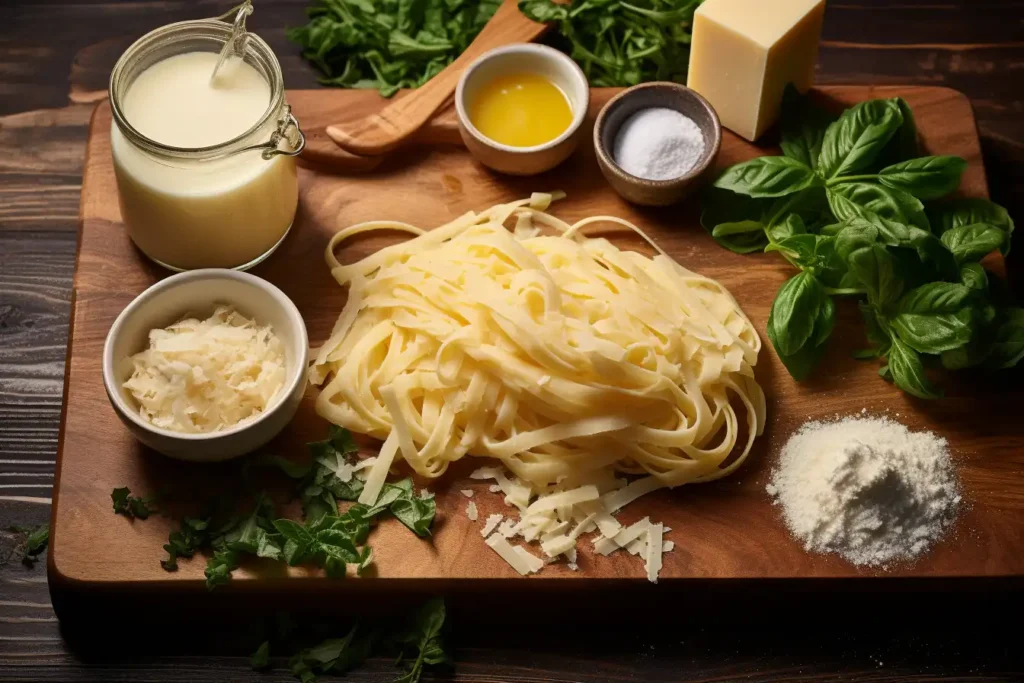
Pairing the right pasta with Alfredo is just one aspect. Here are some additional tips to enhance your Alfredo experience. These tips will help you create a meal that’s truly memorable. Furthermore, these guidelines will help you prepare a top-notch Alfredo dish.
Quality Ingredients
Use quality ingredients for the best-tasting Alfredo sauce. Accordingly, this includes high-quality butter, cream, and Parmesan cheese. Freshly grated Parmesan will deliver a superior taste. Additionally, good quality pasta makes a significant difference. Especially, when it comes to taste and texture.
Serving Immediately
Serve your Alfredo pasta immediately. The sauce can thicken as it cools. Therefore, serving it right after preparation will ensure the best texture. Furthermore, the sauce’s creamy texture and warmth are at their peak when served fresh. Subsequently, it maintains the perfect consistency and flavor.
Adding Extra Flavor
You can add extra flavor to your Alfredo dish with seasonings. These seasonings may include garlic, black pepper, or nutmeg. Furthermore, consider adding a pinch of salt. This can help to bring out all of the flavors. Therefore, experimenting with additional seasonings can greatly enhance your Alfredo experience. Additionally, consider a dash of white pepper or a squeeze of lemon juice for added brightness.
Pasta Water
Remember to save some of the pasta water after cooking. The starchy water can help to emulsify the sauce. Therefore, it helps to create a smoother consistency. Pasta water is key to a perfectly creamy Alfredo sauce. This step is very important for a delicious result. In short, pasta water is a secret ingredient.
The Name of the Pasta for Alfredo Sauce
While there isn’t one official name of the pasta for Alfredo sauce, fettuccine is the most common and traditional choice. The pasta’s flat, ribbon-like shape makes it ideal for this sauce. Therefore, when someone mentions pasta for Alfredo, they are likely referring to fettuccine. Accordingly, other great options include tagliatelle, pappardelle, and linguine. Basically, these are the go to pasta choices for an authentic experience.
Common Misconceptions
Some people might think penne is the best option. However, as previously mentioned, penne does not hold the sauce as well as fettuccine. Also, other tube pasta types often lead to a slightly less satisfying experience. Therefore, its worth reiterating that ribbon style pasta is usually the best choice. In fact, many chefs agree with this general consensus.
Finding the Right Pasta
When shopping, look for pasta shapes such as fettuccine, tagliatelle, or pappardelle. These are the best pasta options for a delicious Alfredo sauce. Additionally, pay attention to the pasta’s texture. Select high-quality pasta to ensure the best possible experience. Ultimately, choosing the correct pasta makes a big difference.
Exploring Different Pasta Textures and Their Impact
The texture of pasta significantly influences how well it pairs with Alfredo sauce. Smooth pasta varieties may not hold the sauce as effectively as those with a more porous surface. Therefore, texture is an essential element to consider when selecting your pasta. Furthermore, the texture contributes to the mouthfeel and overall enjoyment of the dish. Accordingly, it’s vital to match the pasta texture with the richness of the Alfredo.
Smooth Pasta vs. Textured Pasta
Smooth pasta, while often enjoyable, can sometimes cause Alfredo sauce to slide off. Textured pasta, such as fettuccine or tagliatelle, provides a better grip for the sauce due to their porous surfaces. Hence, textured pasta options are preferred for creamy sauces like Alfredo. In addition, the textural contrast enhances the overall experience.
Understanding Pasta Shapes and Texture
Different pasta shapes have different textures, which can greatly influence how they interact with the sauce. For instance, the grooves in rigatoni are designed for chunky sauces, while fettuccine’s flat surface is ideal for creamy sauces. Therefore, it’s important to understand the shape-texture relationship. Thus, the right pairing becomes a seamless blend of flavors and mouthfeel.
Enhancing Your Alfredo Dish with Additional Ingredients
Beyond just choosing the right pasta, adding certain ingredients can elevate your Alfredo dish. Consider adding grilled chicken, sauteed shrimp, or vegetables such as broccoli or spinach. These additions can enhance the flavor profile. Furthermore, they can add more textures to the meal. Therefore, it’s good to explore additional ingredients that can complement the richness of the Alfredo sauce.
Adding Protein
Incorporating protein, such as grilled chicken or shrimp, adds both flavor and heartiness to the meal. The protein absorbs the Alfredo sauce and, consequently, creates a harmonious flavor profile. Also, consider adding some prosciutto for a salty, savory note.
Adding Vegetables
Vegetables can help to balance the rich nature of the Alfredo sauce. Broccoli, spinach, and mushrooms pair particularly well with Alfredo. The vegetables provide a textural and flavor contrast. Therefore, consider adding a variety of colorful vegetables. This enhances the nutritional value of the meal as well.
Making Your Alfredo Dish Healthier
If you want to make your Alfredo dish a bit lighter, there are several adjustments you can make. These adjustments include opting for lighter dairy products, using whole wheat pasta, or adding more vegetables. Therefore, consider the below options to make your dish a bit healthier without losing flavor. Moreover, these tips help you tailor your meal to your preferences.
Lighter Dairy Options
Consider using half-and-half instead of heavy cream for a slightly lighter sauce. You can also use reduced-fat cream cheese to thicken the sauce. However, be mindful that these can result in a slightly different taste and texture.
Whole Wheat Pasta
Switching to whole wheat pasta adds fiber and makes the dish more filling. It also provides a nutty flavor that can complement the Alfredo sauce. However, keep in mind that whole wheat pasta might have a slightly denser texture than traditional white pasta.
Conclusion
Ultimately, choosing the best pasta for Alfredo sauce can greatly enhance your culinary experience. While fettuccine remains the traditional and preferred option, you can also explore other shapes. Therefore, the best choice is one that provides both the right texture and the ability to hold the sauce. Therefore, take the time to consider the options. Accordingly, you’ll be well on your way to enjoying an amazing pasta dish. Remember to use high-quality ingredients. You should also follow cooking instructions, and serve the dish promptly. With these tips, you’ll enjoy a delicious meal. Therefore, you’ll make a perfect pasta dish every time. In short, it’s about finding what works best for your tastes.

